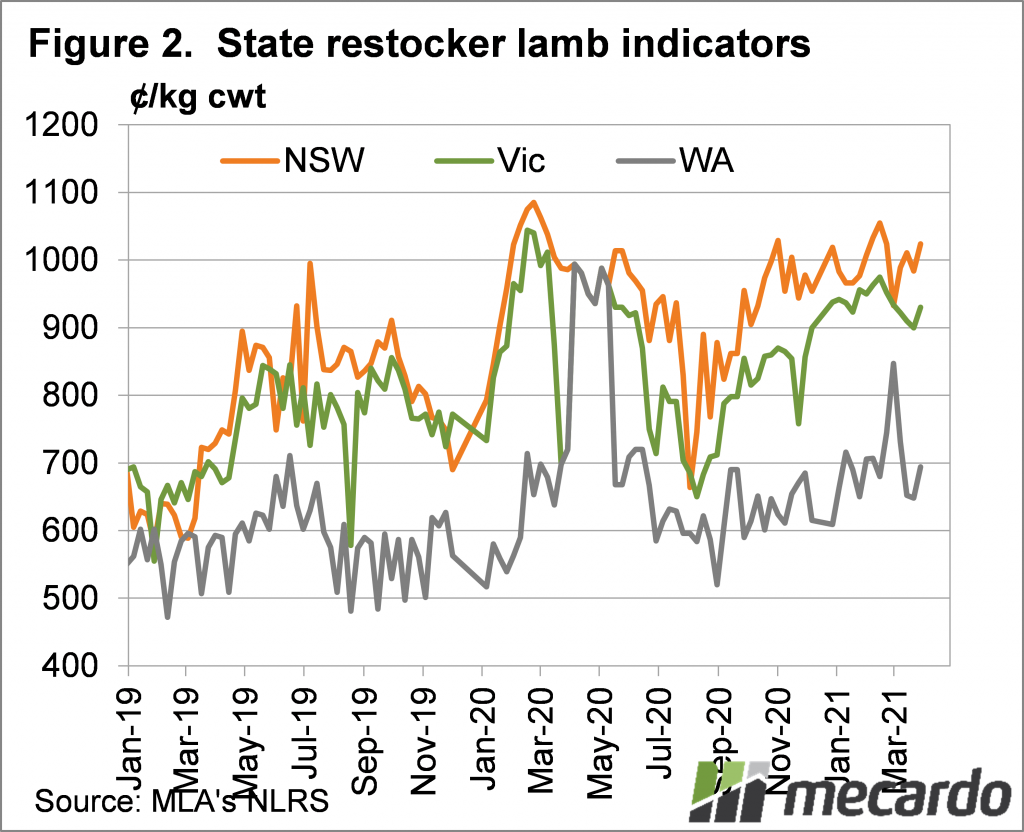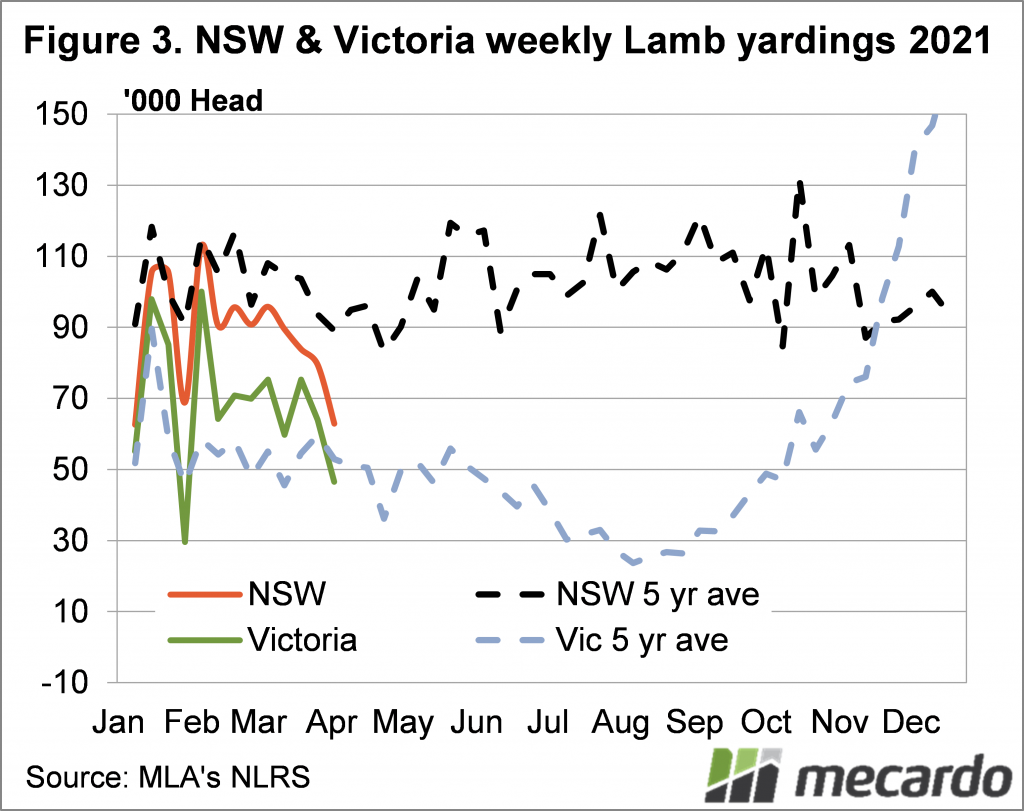We are into April and as cropping and sowing programs are ramping up, lamb finishing programs are winding down. This time of year generally sees a switch in lamb supply patterns through major growing areas, which has a relatively predictable impact on interstate lamb price spreads.
While the weeks around Easter usually bring supply and demand disruptions, due to the public holidays, what we have seen in the last couple of weeks in terms of trade lamb price might be a precursor to upcoming trends.
The good season in much of NSW, and the dearth of sheep, has seen the northern states hold a price premium to Victoria for much of the last two months. The NSW Trade Lamb Indicator has averaged 12¢ higher than its Victorian counterpart, and a 55¢ premium to South Australia.
Figure 1 shows the WA Trade Lamb indicator lagging well behind east coast values since October. WA, and to a lesser extent, SA are export-focused lamb markets. The smaller domestic markets in these states, and their geographical distance from major markets in Sydney and Melbourne, mean they are generally at a discount.
Last week saw an interesting inversion of Victorian and NSW Trade Lamb Indicators. Victoria rallied from 828¢ to 848¢, while NSW fell from 851¢ to 831¢. We could be seeing a period where lambs are being offloaded in NSW, as finished lambs are sold to make room for sowing crops. Meanwhile, in southern Victoria especially, the supply of good lambs is dwindling as fodder crops finish and producers gear up for lambing down the new crop of lambs.
This theory is partly supported by figure 2. The Victorian Restocker Lamb Indicator has fallen in recent weeks as more unfinished lambs hit the market, while in NSW Restocker prices remain strong, as producers are selling the finished variety.
Figure 3 shows how lamb yardings have performed in NSW and Victoria so far this year, and how the five-year average compares. NSW yardings traditionally stay strong through to late autumn and winter, while Victorian yardings fade. Usually, the supply differential sees a premium maintained for Victorian lambs from now on.
What does it mean?
Lamb prices generally track sideways through April and into May before realizing gains coming into winter. As such current prices might be close to the norm for the next few weeks. We’ll know more when we get some supply figures for this week, the first full week back. At this stage, it looks like the usual waning supply and stronger prices in the south might provide a small boost for southern growers until the winter rally kicks in.
Have any questions or comments?
Key Points
- NSW Trade Lamb Indicator has had an average 12¢ premium over its Victorian counterpart for the last two months.
- Normally Victorian lambs are at a premium to NSW from now through to late autumn/winter, as yardings taper off in VIC, but continue to stay strong in NSW.
- WA Trade Lamb Indicator has been lagging well behind east coast values since October and to a lesser extent, SA also.
Click on figure to expand
Click on figure to expand
Click on figure to expand
Data sources: MLA, Mecardo














